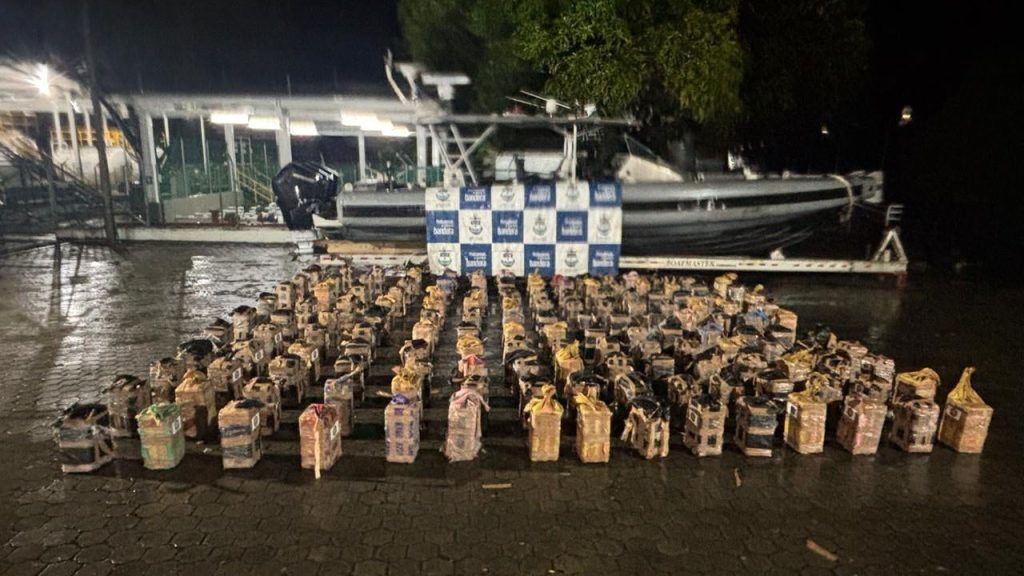Colombian authorities have seized more than six tons of cocaine from a semi-submersible vessel, commonly referred to as a “narco sub,” and two hidden underground caches in the country’s Pacific region.
The Colombian Navy announced the bust earlier this week, releasing dramatic video footage of the narco sub’s interception off the Pacific coast in Nariño, a region bordering Ecuador long known as a key corridor for drug trafficking. Additional footage showed officers and a sniffer dog uncovering buried packages of narcotics, later displayed in neat rows beside a military vessel.
Altogether, the haul included 3,000 kilograms of cocaine recovered at sea and another 270 kilograms unearthed from the hiding spots inland. The Navy estimates the total street value of the seized cocaine at approximately $300 million.
“The national navy reaffirms its commitment in the fight against drug trafficking and will continue to develop massive operations against organised armed groups,” said a navy spokesman.
The military has not disclosed how many arrests were made during the operation or the intended destination of the drugs aboard the semi-submersible. However, similar vessels are often bound for Central America or further north, supplying international markets from the U.S. to Europe.
Just a day earlier, Colombia’s navy reported another operation in the Pacific Ocean that resulted in the seizure of roughly three more tons of cocaine. That shipment, also valued in the tens of millions, was intercepted after navy ships pursued a suspicious vessel. Three individuals were arrested.
Narco subs have become a favoured tool for drug traffickers due to their ability to evade detection. These makeshift submarines, usually homemade and semi-submersible, sit low in the water, making them hard to spot by radar or aerial surveillance. While many are intercepted off Colombia’s coast, the world’s leading producer of cocaine, the vessels have turned up far from South America.
In March 2025, Portuguese authorities seized nearly 6.5 tons of cocaine from a semi-submersible off the Azores, destined for the Iberian Peninsula. In January, a suspected narco sub broke in two while being towed to a port in northwest Spain. And in November 2024, Mexico’s navy confiscated roughly 8,000 pounds of cocaine aboard a submersible vessel 150 miles off the coast of Acapulco. The U.S. Coast Guard also reported offloading $54 million worth of cocaine that same year, some of which had been seized from a narco sub.
Despite the significant haul in Colombia this week, authorities warn the war on drug trafficking is far from over. The Pacific route remains one of the busiest and most dangerous corridors for global cocaine distribution. Colombia’s navy says it will continue to scale up maritime patrols and intelligence operations to intercept future shipments.
As the methods of smugglers evolve, so too must the response from law enforcement, on land, at sea, and below the surface.



